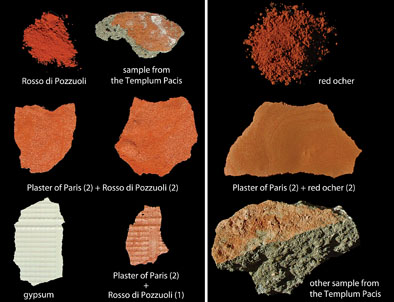October 2011 (115.4)
Article
Red-Painted Stones in Roman Architecture
The presence of red paint on the surfaces of some travertine and Lapis Albanus blocks has rarely been noticed and never investigated. Yet it deserves consideration since it preserves evidence of an unknown building technique that involved the use of red ocher and binders such as burnt gypsum, which was employed in the city of Rome from the late first to early third centuries C.E. I present evidence for the presence of red-painted blocks in Rome and investigate the composition of the red paint. I also comment on what has previously been reported about the subject and argue that the function of the red layer was to certify that the architect and/or the contractor had approved the painted surfaces.
